Nursery frogs belong to a group of microhylids that occur in the Wet Tropics region of northern Queensland. The males from this group of frogs guards their eggs in moist leaf litter/earth, inside which the tadpoles develop into frogs entirely within the egg (there is no tadpole stage outside the egg). Their habitat generally consists of rainforest in mid- to high-elevation areas. Their most southerly distribution is just south of Townsville, where the endemic Mount Elliot Nursery Frog (Cophixalus mcdonaldi) occurs at, you guessed it, Mount Elliot within Bowling Green Bay National Park. Another endemic species occurs a relatively short drive from there and off the mainland at Hinchinbrook Island, the Hinchinbrook Nursery Frog (C. hinchinbrookensis). These two species were the target of a recent frogging trip that my friend Ben Revell and I embarked on.
With only a week up our sleeves, a lot of driving and a lot of walking, we began the first stint of our trip from Bundaberg to Eungella near Mackay, about seven hours in total. I had already driven from Kilcoy to Bundaberg via Rainbow Beach for the annual citizen science bioblitz we had both been invited to attend. Our stop at Eungella would serve as a pitstop as the next day we would travel another five or so hours to Bowling Green Bay National Park. Having arrived at Finch Hatton Gorge within Eungella National Park at about 10:30pm, we had a quick poke around for the threatened Eungella Torrent Frog (Taudactylus eungellensis) and any other critters, before settling down for the night.

We left the next morning at around 7am and arrived at the national park south of Townsville around 1:30pm. In typical Townsville fashion, it was hot and sunny! We’d spend the next 45 minutes or so deciding on and packing the most important items to fit into our standard-sized backpacks for an overnight stay in the national park. Camera: check. Batteries: check. Headtorch: check. Hammock: check. Food (limited): check. Clothes? Hmm, starting to run out of room. Just a pair of jocks will have to do. Oh, and better take up some water, too, which we crammed small bottles of into any remaining backpack space. We set off at 2:20pm, weighed down with very heavy backpacks.
Now for some fun facts. The literature notes the endemic nursery fog occurs from 900m above sea level (ASL). The carpark was at 35m ASL… The walk to the bottom of the falls on Alligator Creek is 8km from the carpark and 240m ASL. There are several creek crossings, too, one of which is waist deep and inflicted a small gash on my foot as I waded through. The designated walking track then ends upon arriving at the bottom of the falls. From this point you need to begin the steep ascent through scrub adjacent the waterfall. The track remains steep, with rocks peppered all along its rough path, before opening out onto the waterfall rock face. Thankfully, the falls were restricted to narrow streams of water cascading down the granite rockface, and the absence of wet weather meant the rockface was generally not slippery. Still, not being a mountain goat, it made for a calculated and at times sketchy climb for myself. The top of the falls is 470m ASL. At this point the sun had dipped below the horizon and we refueled, noting how much (or little) water we had left. And for those keeping track, there was still another 430m we expected to have to climb that night before reaching the habitat of the frog.
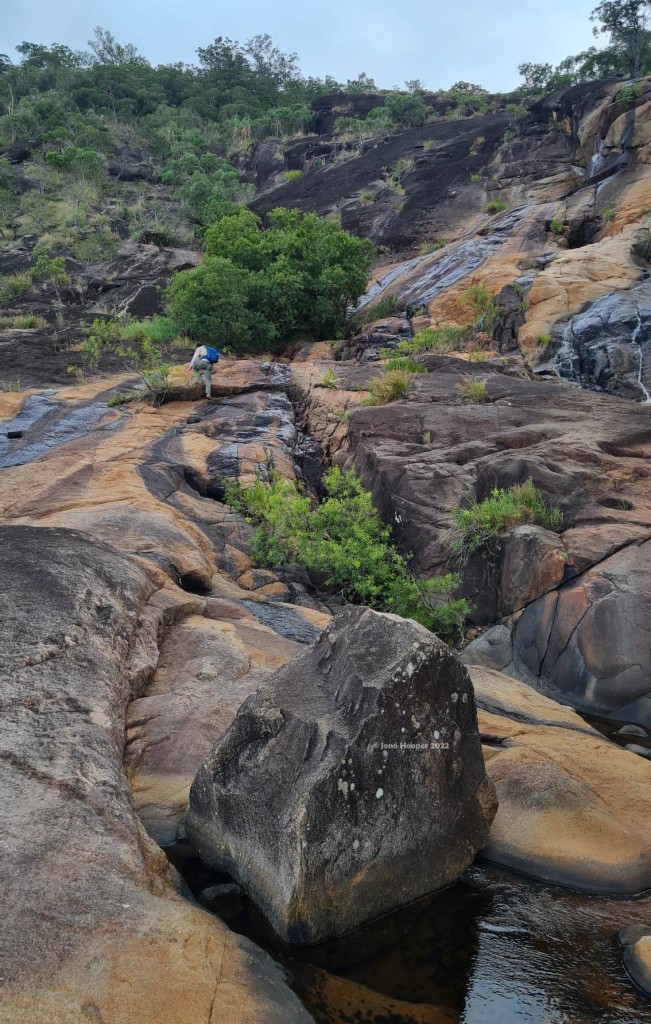
We ventured on into the evening, navigating the many obstacles we were presented with. Alligator Creek is still mapped as a stream order 3 watercourse at this point (5 is the largest), and the numerous, decently sized waterfalls we encountered would continue to hamper our progress. By this point I had run out of my bottled water, and thankfully the flowing Alligator Creek provided a constant source of delicious, clean water to maintain my hydration. We continued for another seemingly endless 1.5kms. An endemic leaf-tail gecko also occurs at Mount Elliot, so we were very pleased to have found many of these on the surfaces of rock and boulders during our ascent.
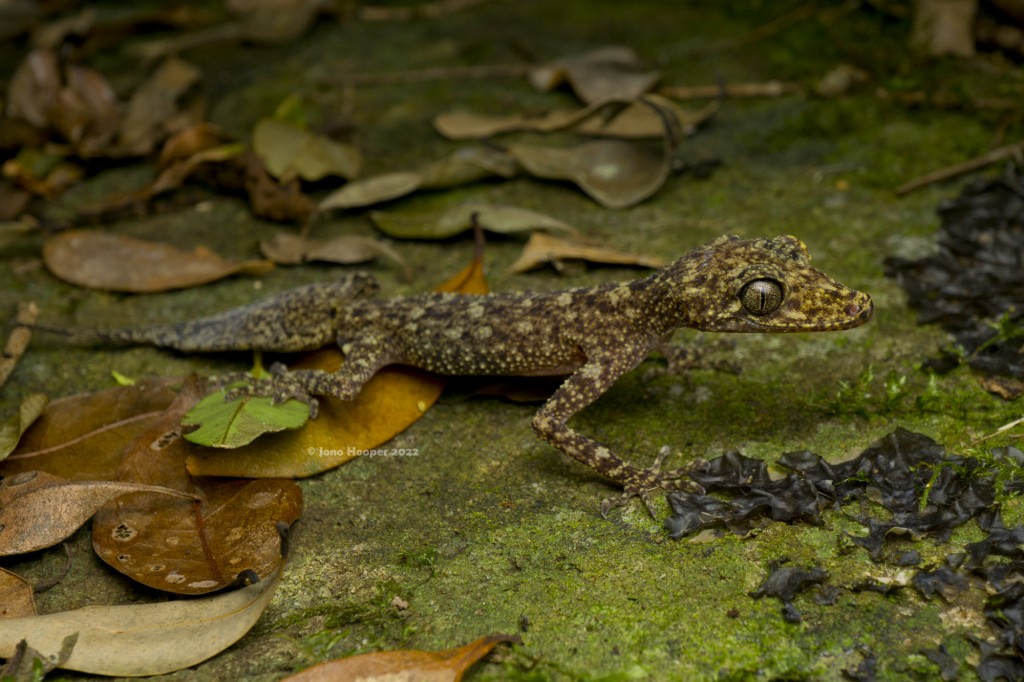
The hours passed by and soon it was 10:30pm, about 4.5hours since reach the ‘top’ of the falls earlier on. At this point the depressingly long hike was giving rise to thoughts of aborting our mission for time sake, given the time already taken and return hike back to the falls after midnight. I was a short distance back from Ben as my mind churned. He had stopped to photograph something, which wasn’t unusual. As I was determining how to squeeze through a gap of rock and vines with my backpack on, he very seriously exclaimed “I got one”. I was lost for words, given we were only at about 760m ASL and my hopes of finding the frog had begun to fade.

As I turned to retrieve my camera from my backpack, I noticed something dash across the leaf litter at my feet. It was a second nursery frog, though it quickly disappeared between the boulders. This species reaches 26mm in length and is generally a pale brown or tan colour. Now well and truly relieved to have found the frog we’d spent eight hours on the hike for, we got some photos, noted the altitude and created a waypoint of the location on Ben’s GPS. Then began the long climb back down the creek to the falls. On our way back, I spotted another nursery frog at 715m ASL.
The journey back down the creek seemed to take even longer than our climb up it, and it was about 2am (or later?) before we reached the hammocks we had set up earlier that evening. Knowing it would only be a few hours before sunrise, we promptly got in our hammocks, foregoing the small pleasure of changing into clean clothes. Our sore feet and shoulders would find some temporary relief whilst we slept. Upon awaking a few hours later and downing some Up&Go’s, it would be midday before we would reach Ben’s ute back at the carpark, and the air-conditioning and cold soft drinks that awaited us. Our plans for the remainder of that day subsequently changed. Upon reaching Townsville, we found some much needed hot showers and a hot meal before stocking up on bottled water and heading to Lucinda, where we would depart from by ferry the next morning for Hinchinbrook Island.
The Hinchinbrook Nursery Frog occurs in rainforest and heathland down to at least 300m ASL, though I’m told they can occur as low as ~100m ASL, however unreliably. This lower altitude was welcome news following our Mt Elliot hike, though we had already known this during our trip research. From where we rather abruptly and ungracefully disembarked the ferry upon reaching Hinchinbrook, we set up our main camp site, before embarking on a 5km beach hike and arriving at Mulligan Falls several more kilometres later. From there, it would be another 2.5km boulder hop up the creek to reach 300m ASL where prime nursery frog habitat occurs. This was a much gentler gradient to traverse than Elliot, with only a few small waterfalls and rockfaces to navigate by. We reached our destination by about 6pm, again using the crystal-clear flowing creek water to replenish the water we had lost through sweating. Our clothes could probably have been wrenched out at this point.
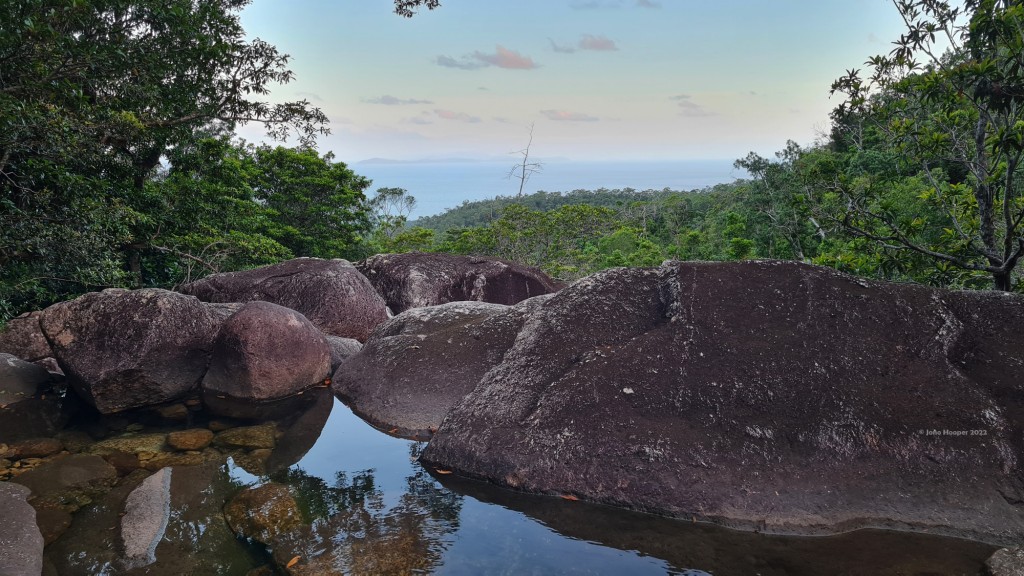
Whilst waiting for the last light to fade, the view from perched upon a boulder looking out to the bay below was quite spectacular. It was soon dark enough to switch on our headtorches, and above the sound of the rushing water were the calls of the nursery frog we had come so far to find. The rainforest fringing the creek was dense, steep and riddled with lawyer vine, whose tendrils seemed to be ready to entangle us upon any poorly calculated move. Upon a large rock face we found several nursery frogs travelling up and down the near vertical surface. This species is the same size as the Cophixalus we found two nights before, and most similar to the Southern Ornate Nursery Frog on the mainland. With relief and excitement, we snapped a few photos and recorded the location, before eagerly escaping out of the rainforest back to the open creek to begin our descent. A light shower of rain caught us by surprise as we began boulder-hopping down the creek, making the boulders damp and stripping away the grip we heavily relied upon. Thankfully, this rain was short-lived, and the grip quickly returned, as did the moon above us.

It must have been around midnight before we got back to our hammocks which we had set up earlier that afternoon. However, this time we took advantage of a quick swim at Mulligan Falls to rid ourselves of the odour from our sweat-saturated clothing. It was a small and pleasant luxury to sleep in clean clothes that night.
The next morning we had a cruisy start to the day, as our bodies were well and truly aching by this point. Another swim at the stunning Muligan Falls was in order, before packing up and hiking the ~7kms back down to where the ferry would pick us up from the following morning.
The third target frog species of the trip was not a nursery frog, but a gungan (or toadlet); a species from the Uperoleia genus that occurs in drier woodland west of the tropical rainforests in north QLD. About an hour’s drive away from Lucinda is Paluma; a tiny, quiet town perched on the range north of Townsville which is surrounded by rainforest. We passed the time by checking out some of the short walks to where other rainforest frogs would likely reside, before heading a short distance west where the Uperoleia, specifically U. littlejohni occurs. Whilst there was plenty of standing water lying in shallow channels besides the road, our night search would reveal many other frog species except this one. A little surprised and disappointed, we headed partway back down the range to a large creek and popular swimming location in the hope to see the Waterfall Frog (Litoria nannotis). We had both seen this incredible threatened species before, and we were encouraged by how many we found upon arriving at this location. However, we were conscious of the 13-hour drive back to Bundaberg the next day and so we called it a night by a free camp site 30 minutes down the road.

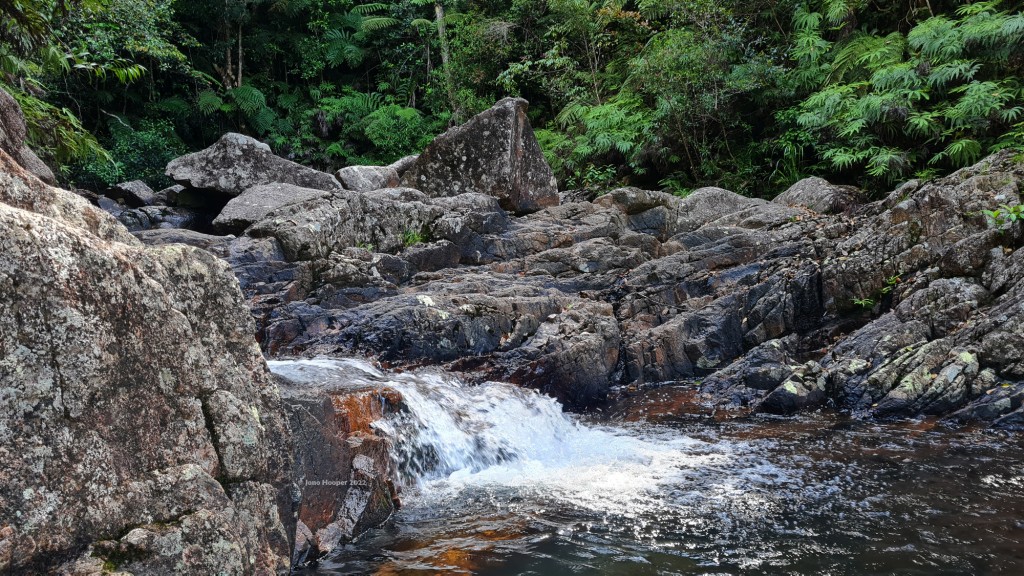
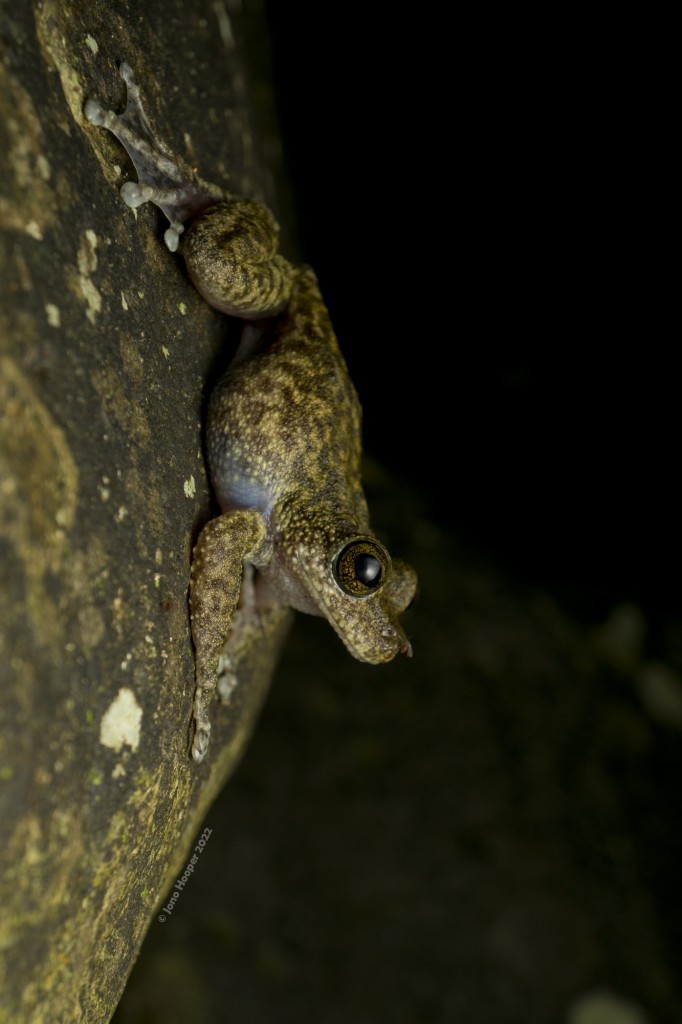
The following day we somehow made good trip progress with surprisingly few iced coffee-induced toilet stops and arrived in Bundy before 8pm. It had been a whirlwind frogging trip, with each of us walking well over 50kms to reach our target species. The thought of another step or rock-hop had seemed too painful to manage after Hinchinbrook, yet somehow we managed it anyway during our time around Paluma. We were thrilled and relieved to have found both the endemic nursery frogs we had set out to find and punished our unfit bodies to achieve. And yet at the same time we were both craving to be back home with our wives and kids.

